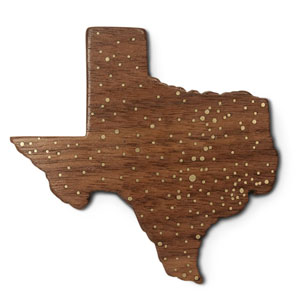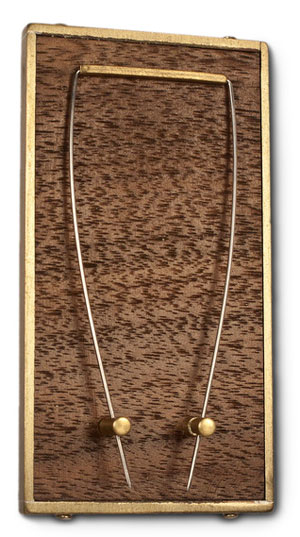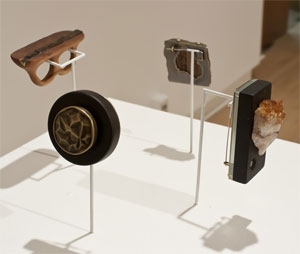
Robert Thomas Mullen may have been trained as a metalworker — that’s what both his bachelor’s and master’s degrees are in — but, over the past couple of years, he has been drawn more and more toward working with wood.
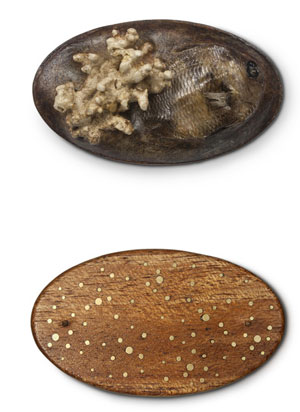
At first, Robert said, he started working with wood in part because of the rising prices of metals. It was also related to long walks he took while attending graduate school in Pennsylvania. “I’d be walking along Lake Erie, and I’d collect fish bones and stuff.” Such found materials just “didn’t seem to work well with the metals I was using.”
With wood, on the other hand, said Robert — who primarily makes jewelry — “I liked the size of the pieces I could make and still have them be light. I also liked the warmth of the wood; it’s completely different than metal.”

He did have to make some adjustments in learning new techniques as he began to work with wood as a material; in particular, Robert said, he had to learn a lot more “cold” joinery: “Before, I was doing a lot of soldering.” His techniques in working with wood include a lot of stacked laminations, as well as a lot of carving. “I’m mostly using hand tools except for the [Dremel] Flex Shaft, drill press, band saw and belt sander,” Robert said — although he occasionally gets to use a few hand tools inherited from his handyman grandfather, such as a wooden mallet.
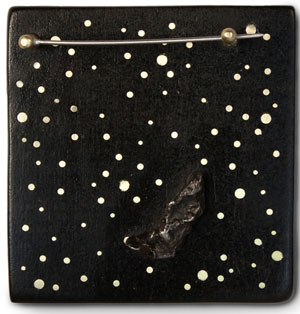
Robert also does a lot of metal inlay, and continues to work with found materials. Robert thinks this interest dates back to his childhood. He remembers, for example, that on family trips to a farm, “I’d collect nuts and bottle caps — any little debris stuff.” Today, “Ninety percent of the stuff I use is found either by myself, or I get packages from people, with just things they found around the house. I have friends all over. People have also gotten stuff when they went on vacation, like seashells, chunks of driftwood…”
Location does matter for Robert’s found materials: “When I was in Pennsylvania, I used a lot of fish bones and sand; a lot of stuff native to Pennsylvania.” He’s currently living in Houston, in an area with a lot of new housing development that entails tearing down old houses. On the street, he might find bike reflectors, shingles, concrete, countertop Corian®, linoleum squares, or many other things.
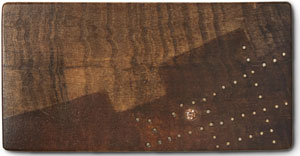
He’s also found himself more drawn to woods indigenous to the Texas area, such as mesquite, live oak and walnut. For example, he’s worked with chunks of live oak that were downed when Hurricane Ike went through Galveston, Texas in 2008. One of Robert’s pieces from this wood is a brooch meant to represent a map of Galveston. Another piece, his “Bark Brooch,” incorporates walnut. “From the front, it looks like a piece of bark. The back is half in metal and half in wood. I like the similarities between how it manifests and wood; most people wouldn’t notice.”
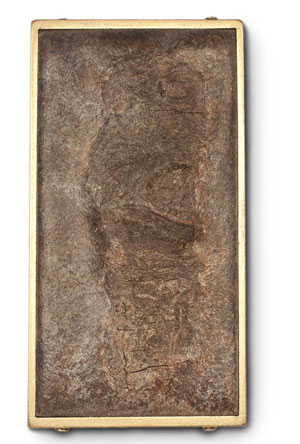
He’s tried using India ink to get wood to a dark color before — “at the time, I had not worked with ebony yet,” he said, and, due to a recent trip to Costa Rica, where “everything is brightly painted,” Robert says he now “really want to start putting color into my work more.”
Sometimes, when Robert wants a specific color or type of wood, he will purchase it directly; sometimes, he gets wood from woodworker friends who provide their scraps and cast-offs for his smaller pieces.
Those woodworking friends are about to come in handy in another way, too. “I’ve had the desire to make larger things for the last year,” Robert said. “A lot of my friends who make furniture and lamps and things want to learn to make drawer pulls and things. They want to learn small, and I want to learn big: it’s a good trade-off.”
